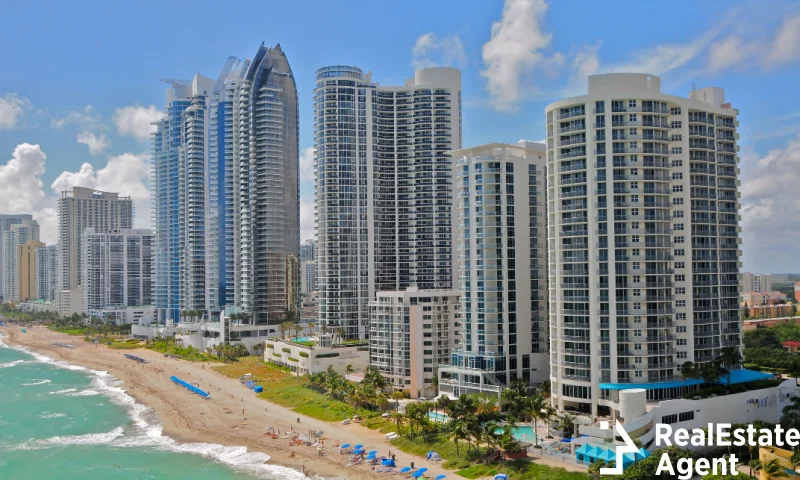The commercial real estate market has been through a roller coaster during the pandemic, with different sectors being affected differently. As we move over the two-year mark since the start of the pandemic, we take a closer look at how the country’s commercial real estate market is influenced. With new threats on the horizon, should we look indoors to solve our problems or try to balance the focus between what’s happening in the world and our own struggles with homelessness?
The future of the commercial real estate market is shaping up in the US. It is essential to look at what influences it and what it’s shaping up to be. In times of struggle and turmoil, many people and institutions are distracted, and we lose focus of what can affect us more directly. While many things deserve our attention, the US commercial market is another one with a significant impact on US housing prices.
Pandemic Commercial Real Estate Overview
During the past two years, the pandemic’s impact on the real estate market as a whole has shown what economic turmoil can do to industry prices. While we barely felt the effect at first, the commercial real estate market managed to push through the first six months barely touched. Yes, prices appreciated, but they seemed to reach relatively normal levels from a historical perspective. Still, in the first quarter of 2021, acquisitions of properties and portfolios over $2.5 million fell by 28%, and transactions declined for any type of commercial real estate. Those $2.5 million portfolios and properties declined by 1% among commercial members of the National Association of Realtors (NAR).
What we could also see was an increase in sales of land and industrial properties, but the decline covered all other types of commercial properties. By the end of 2021, however, multifamily and industrial properties outperformed historical trends as vaccination rates climbed. These two sectors made up for the loss brought by the others. The great news of 2021 was that after the first ten months of sales, the year surpassed investment acquisitions from pre-pandemic levels of 2006. The NAR is forecasting a further strengthening of the commercial real estate market in 2022. We can see that interest rates climbed but they still remain below historical levels. This should not decline investment activity or the companies’ ability to service their debt.
We can look at several factors, but when the prices are climbing fast, it means that demand is high while supply is low. That has been the case for years, but now, the economic struggle, supply chains, and grim future continue, and the impact will only increase. Focusing on the real estate market is essential because the real estate industry affects the lives of each individual. The occupancy ratio rose or fell, depending on the type of real estate property. If Industrial and multifamily units experienced increases of 10% and 6.8% respectively, office space dropped by more than 10% while retail spaces grew by 5% as of the end of 2021.
Trends in Commercial Real Estate Market in 2022
We cannot forecast what will happen during 2022 as the geopolitical situation in western Europe started on February 24, 2022, and how the US commercial real estate market will be affected is yet to be known. Still, internal trends have been shaping up for a few years, and those should be analyzed, understood, and counteracted when possible. Making a decision based on relevant information from the real estate market will prove beneficial in the future.
While the commercial real estate market had been affected by the pandemic, and it still is, those thinking about investing in commercial property in 2022 should be happy to see where revenues go. We can foresee that the appreciation in the housing market will be slowed down, but it’s not likely to completely stop or drop in commercial real estate. Demand is still high in industrial, multifamily, and retail, but possibilities could decrease.
While history seems to repeat itself, we should take action not to allow it to happen. After World War 1 ended in 2018, the Spanish Flu pandemic occurred between 1918 and 1920. World War 2 started in 1939. The cyclic course of historical events seems to have accelerated as we are much more dependent on the economies of other countries. Let’s see what is happening, what influences the commercial sector of the real estate market, and what can be done to hinder the struggle of so many people and the economy as a whole.
Commercial Real Estate by Type
The commercial real estate market is made out of different types of commercial real estate. The commercial real estate market has experienced both gains and losses during the pandemic. Overall, there has been an 8.4% increase in rents, a historical high while vacancies dropped to 4.1%. Industrial properties were in high demand, as apartment properties interest climbed by 30% since 2019, but office spaces are still lagging as demand for those dropped.
Residential health care facilities saw a sharp drop in demand and interest due to the COVID pandemic, and even if there has been an increase, the percentage remains low. Still, industrial and multifamily properties experienced a price appreciation that reached rates of double-digit numbers. While apartment rentals and home purchases usually go in different directions regarding prices, this is not happening now. When there is a hot and robust housing market, the rental market is typically soft, but now, people can’t afford to purchase homes, and many people turn to rentals, but those are expensive as well. Investors in housing and rental properties should be aware of the population’s needs and focus on affordability before their profits because profits are unlikely to come if people can’t afford to rent from commercial real estate investors or purchase from sellers.
Secondary Markets influenced by Migration
Migration throughout the US can be affected by several factors. When you look at what happened during the pandemic, there was an increase in population in secondary markets while people started leaving the major cities. This occurred due to both the COVID pandemic and the rise in prices in the major cities.
Firstly, the pandemic led to many people being able to work from home. Remote work opportunities increased during the lockdown period, and in many sectors, it became clear that office presence is unnecessary, which, in turn, continued to affect office space interest. Those industries determined to be essential still worked from the office and got more exposed to the pandemic, while others made it evident that remote work is possible. Secondly, when people realized that they no longer needed to be close to their office and pay the high cost of living in downtown areas, they moved to the suburbs and invested in home office spaces in rentals or purchased homes with home office space.
Still, migration is starting to cross state lines. More people are moving outside of the most expensive states in the US towards more affordable areas. In some areas, the situation is even more dramatic as people are looking across the country’s borders, into Mexico, Canada, or other more affordable places on the globe. This migration is also influenced by mental health and female reproduction legislation across the country, which put even more pressure on US society.
Existing Properties Interest Climbs
While there is an increasing demand for housing and the homelessness situation is reaching concerning levels, there are vacant properties available. These properties are either in a desolate state and in serious need of repairs or unoccupied but unavailable for other reasons. While other countries manage this situation through social means and local decisions, this isn’t happening in the US. By increasing environmental awareness, we can also look into repurposing existing properties and transforming them into condominium properties and rental units with much less financial pressure from investors, individuals, or business owners.
Due to labor shortages, disruption of supply chains, and continuous economic growth, inflation reached decade highs. Materials are less affordable by the day, making housing prices climb further. Supply issues due to the pandemic are still ongoing, and the recent geopolitical situation in Eastern Europe is likely to impact them further. But that can create problems for many other sectors, including food shortages.
Because of this, derelict properties will become more appealing, and investors looking into flipping multifamily properties should look in on what’s available. It is much more cost-effective to fix something already built than build something from scratch. Environmental push also underlines this as the construction industry is responsible for 40% of the carbon emissions. Restoring old buildings is more beneficial than building new suburban sprawl of single-family homes that bring no environmental benefits.
Supply Chain Issues Continue
As we already mentioned the supply chain issue, we need to explain a bit more. During the pandemic, supply shortages were felt throughout the economy, but the construction industry felt one of the most brutal blows. For more information, let’s look at how supply shortages influenced the prices of the most commonly used building materials during the previous 12 months.
While the overall increase in building materials saw a 20% increase during 2021, anyone who invested even in renovations saw an increase in prices even for the simplest things like trendy kitchen remodels or new furniture. Mainly, we see how specific materials were affected and what is likely to still be affected in the future.
Over the past 12 months, the price for steel mill products rose by approximately 127%. Steel products are necessary for the commercial real estate market in both apartment and industrial properties. While China is the biggest producer of crude steel production with around 1,000 metric tons from a total of 1,880 worldwide, the US produces 72 metric tons while Russia produces 71 and Ukraine about 20. The geopolitical turmoil will lead to a further decrease in production worldwide, and supply chains are now problematic due to the blockade of the Black Sea ports of Ukraine. Plastic production costs rose by 34%, while lumber and plywood products climbed by 12.7% and 17.6%, respectively. Add to this the labor shortage within the US as workers demand better wages and working conditions. We can understand why this issue isn’t going away yet. Sustainable decisions need to be made, and investors should take a closer look at alternatives like wooden skyscrapers and proper forest management practices in the US.
Federal Focus on Real Estate Investors
On the West coast, the surge in property prices overwhelms the population and investors, which results in homelessness, migration inside and outside the US, and a more dramatic long-term effect. An intense focus on affordable multifamily properties is essential, but not only there. While housing affordability is an issue in California, secondary markets experience appreciation rates as well, so the problem isn’t fixed; it’s moved elsewhere. In some cases, these appreciation rates extend across the US border, putting pressure on those living outside of the US.
There is a desperate need for housing that low-income families can afford throughout the country because as migration leads to a growing demand for more affordable states, low-income families need a place to live. Wages are not climbing at the same rate as rental prices. This is a disaster waiting to happen, and the federal government should focus on measures that can inspire a response to the country’s needs. The federal government should focus on what investors are doing and the types of developments they invest in.
Conclusion
Seeing as the commercial real estate market doesn’t work on its own and is dependent on various factors both from inside and outside the country, looking at the bigger picture is essential. At the same time, we need to understand that while the global market works together, the US market needs to be able to function on its own when necessary. Commercial real estate investments will continue to be required both inside and outside our borders, but when it comes to producing, the dependence on foreign markets should not be as pressing.
The commercial real estate market needs to focus on the needs of Americans and manage investments in such a way that growth is sustainable. Through sustainable planning, the country’s industry will produce more, the building costs can decrease, and the affordability of the population will grow. Through job growth and wage increases to motivate the workforce, a market restructuring is likely to be positive.
During these times, communication and the flow of information are necessary. Make sure you make informed decisions regarding the commercial real estate market and help others do the same. Share this article with friends and family interested in how the commercial real estate market is affected by different factors. Comment in the section below if there’s anything else you might be interested in understanding, as awareness is never a bad thing before a big decision.















